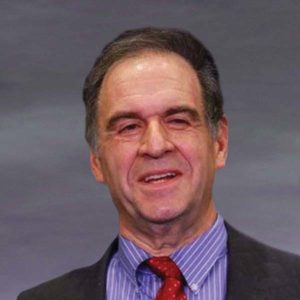 Both Michael Dell of Dell and Andrew Liveris of Dow Chemical lead U.S.-based $60 billion technology-driven global enterprises. However, their jobs differ in a crucial way—one that may challenge the future vitality of all public companies in our celebrated free enterprise system. The same week that Dell celebrated the one-year anniversary of his firm’s $25 billion privatization, which allowed an escape from the short-term pressures of activist investors, Andrew Liveris’ strong performance was under a scorching activist attack.
Both Michael Dell of Dell and Andrew Liveris of Dow Chemical lead U.S.-based $60 billion technology-driven global enterprises. However, their jobs differ in a crucial way—one that may challenge the future vitality of all public companies in our celebrated free enterprise system. The same week that Dell celebrated the one-year anniversary of his firm’s $25 billion privatization, which allowed an escape from the short-term pressures of activist investors, Andrew Liveris’ strong performance was under a scorching activist attack.
No Good Deed Goes Unpunished
Ironically, at the close of November’s Dow Analyst Days, where Liveris won universal praise, he faced a vicious smear-campaign-style attack from the hedge fund Third Point LLC. This came despite the fact that over the past five years Liveris led Dow’s stock from just over $5 a share to more than $50 a share, as well as through a $8 billion share buyback and hefty dividend increase. Total shareholder returns outperformed the S&P 500 and chemical industry S&P on one-year, three-year and five-year bases. All this was matched by robust expansion in key markets and healthy employment growth.
Happily, the week ended in a peaceful détente, with Dow agreeing to add four new independent directors, including two candidates promoted by Third Point, a holder of two percent of Dow’s shares.
Prometheus Unshackled
In a similar vein, Dell survived a high-profile, distracting, hostile attack from “activist” investor Carl Icahn in 2013. The billionaire investor used TV interviews, social media tweets and open letters–notably one titled “Let the Desperate Dell Debacle Die”—to demonize CEO Michael Dell and his proposal to buy back and take private the company he had founded at age 19. Michael Dell summed up his view of Icahn’s antics in an interview with Forbes, “It’s a big poker game to him. It’s not about the customers. It’s not about the people. It’s not about changing the world. He doesn’t give a crap about any of that.”
After prevailing in the battle, Dell triumphantly led his company’s reinvigoration by transforming the way Dell designed, produced and distributed personal computers, laptops, tablet devices, servers, enterprise systems and cloud computing. Today, he continues to steer his company through bold moves into cloud computing, networks, data storage, analytics and services—including a six-year plan to spend $18 billion on 40 significant acquisitions in these spaces. The third quarter of 2014 found the company celebrating soaring results, with domestic shipments up roughly 20 percent while the industry overall was up just 4.3 percent.
However, the chief reason Michael Dell is envied by his peers these days is that privatization brought his firm a priceless unity of ownership, leadership and strategic mission. As he wrote in The Wall Street Journal, “Privatization has unleashed the passion of our team members, who have the freedom to focus first on innovating for customers in a way that was not always possible when striving to meet the quarterly demands of Wall Street.”
Dell remains, as always, his own company’s disrupter-in-chief. He sees his business not as a religion to be worshiped, but as a dynamic entity. Similarly, Liveris is known as an “internal activist” respected for his ability to continuously reinvent Dow. Both CEOs see great long-term value in their integrated businesses as a competitive edge and have fought short-term pressures to dismember their enterprises.
Financial vs. Market Capitalism
The lesson? Vigilant CEOs have a right, and even a duty, to resist self-motivated activism that adds nothing. It’s worth noting that it wasn’t so very long ago that investors who resorted to such antics were called by the less salubrious term “green mailers.”
Many healthy, nimble global businesses such as DuPont, PepsiCo and Time Warner have also wrestled with the costly strategic time and energy distraction of venomous activist investor campaigns. At the same time, many of these same activists successfully catalyzed important, timely value-enhancing strategic focus at firms such as HP, Home Depot, Yahoo!, Chesapeake Energy and Sotheby’s.
However, what has changed is that with 6,000 publicly listed corporations on our major exchanges and roughly 6,000 hedge funds bumping into each other, there is a grave danger. This danger is similar to the good-governance crusades post-Sarbanes Oxley. The tools used to punish the bad guys are too clumsily being employed to undermine the good guys. This can’t be good for long-term investors—or for the industrial base and economic health of this nation.

Chief Executive Group exists to improve the performance of U.S. CEOs, senior executives and public-company directors, helping you grow your companies, build your communities and strengthen society. Learn more at chiefexecutivegroup.com.
0

1:00 - 5:00 pm
Over 70% of Executives Surveyed Agree: Many Strategic Planning Efforts Lack Systematic Approach Tips for Enhancing Your Strategic Planning Process
Executives expressed frustration with their current strategic planning process. Issues include:
Steve Rutan and Denise Harrison have put together an afternoon workshop that will provide the tools you need to address these concerns. They have worked with hundreds of executives to develop a systematic approach that will enable your team to make better decisions during strategic planning. Steve and Denise will walk you through exercises for prioritizing your lists and steps that will reset and reinvigorate your process. This will be a hands-on workshop that will enable you to think about your business as you use the tools that are being presented. If you are ready for a Strategic Planning tune-up, select this workshop in your registration form. The additional fee of $695 will be added to your total.

2:00 - 5:00 pm
Female leaders face the same issues all leaders do, but they often face additional challenges too. In this peer session, we will facilitate a discussion of best practices and how to overcome common barriers to help women leaders be more effective within and outside their organizations.
Limited space available.

10:30 - 5:00 pm
General’s Retreat at Hermitage Golf Course
Sponsored by UBS
General’s Retreat, built in 1986 with architect Gary Roger Baird, has been voted the “Best Golf Course in Nashville” and is a “must play” when visiting the Nashville, Tennessee area. With the beautiful setting along the Cumberland River, golfers of all capabilities will thoroughly enjoy the golf, scenery and hospitality.
The golf outing fee includes transportation to and from the hotel, greens/cart fees, use of practice facilities, and boxed lunch. The bus will leave the hotel at 10:30 am for a noon shotgun start and return to the hotel after the cocktail reception following the completion of the round.